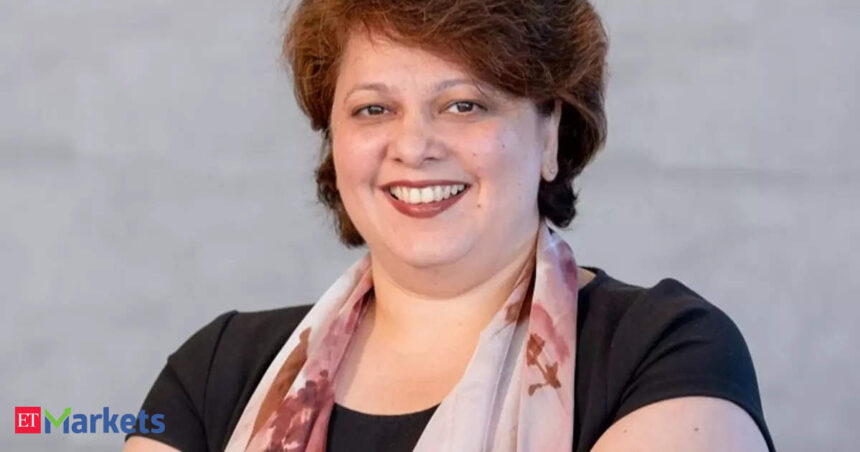Today we are just going to focus on the risk profiling of these kinds of investors because as you grow in your life, not only in terms of age, but in terms of your income, your lifestyle gets better. A lot of things around you in terms of financial planning also keep changing. Till a certain age, you have financial responsibilities. After a certain age, it just goes away. When you are a person who has a financial portfolio, what kind of risk profiling should be done? And what kind of risk profiling changes as per age? What exactly is investor risk profile?
Every investor has a risk profile depending upon what is the sort of risk that they want to take. So you have conservative, you have moderate, you have aggressive. Broadly, these are the three categories. Someone who is aggressive means that they want their money to grow and they are willing to take a lot of risks to get their money to grow. Whereas someone who is conservative means that they do not want to take risk and they really want a very stable sort of a return in their portfolio. So, these are typically the three different types of risk profiles. And then of course, you can further bring it down to say, moderately conservative or moderately aggressive as well. But yes, these are the three main ones, basically.
Unlock Leadership Excellence with a Range of CXO Courses
| Offering College | Course | Website |
|---|---|---|
| IIM Lucknow | IIML Chief Operations Officer Programme | Visit |
| Indian School of Business | ISB Chief Digital Officer | Visit |
| IIM Kozhikode | IIMK Chief Product Officer Programme | Visit |
Let us talk as per age; let us consider an investor who is 30 years old. Their risk appetite, their risk profiling would differ from a 20-year-old and a 40-year-old. Ideally, how much risk can a 30-40-year-old investor take?
All right, so you see the different types of risks. There is market risk, which is basically the markets could go up or down. There is of course, credit risk, which is more there in bonds, which means that they could be a default. There are other risks, even biases are a risk. So, when we look at a 30-year-old or somebody in their 30s, certainly they can take more risks because they have a lot of years ahead of them.
It is the accumulation phase where one is basically starting to accumulate assets and has a long-term to invest. At this age group, most people would have children’s education goals to fulfill. Maybe they have just started a family and of course, the children’s education is a goal. Of course, saving for retirement is a goal that everybody has at any age in their life.
At this age, since you are young, you can take an aggressive stance and take risks. So, by taking risks, we mean putting it into an instrument where there could be volatility, for example, equities. Again, within equities, there are midcaps, smallcaps and largecaps. I would say that for somebody who is in 30s today, I would say get aggressive because honestly, if I have Rs 50,000 to invest for the next 25 years and I am just putting it in a safe instrument, maybe, buying some insurance policies or earning a 5-6% return versus putting it in equities, which number one, beat inflation, and secondly, grow well over a long period of time, you could actually have 2X more.
That is the reason why it is really important to have time on your side and take a good amount of risk, be an aggressive risk taker, which means that when you are saving for retirement, look at equities, look at the NPS active equity. Again, while we are talking about taking risks, the other risk that I would caution people in 30s against is this whole FOMO factor. A lot of people have FOMO that their friend or their colleague or somebody whom they know is making much more money and making it much faster than them in various get-rich-quick schemes.
So take risk but take it in the right instrument, which is equities, publicly traded, regulated and a lot of information available. You could even go up to like 70% equities at this stage of your life.
Let us break this down further in terms of market cap allocation. Since they can go aggressive, do you mean more exposure in mid and smallcaps or is it better to be very well diversified even over there?
I think more exposure in midcaps and smallcaps.
Let us move on to our next age group, which is 40 years old. This is the age where you can see your financial goals almost getting done with. A lot of people might still be having a few years left in their home loans, maybe pay off the child education loan or maybe that particular goal is just coming up. How do you navigate the risk factor over here because you also have to start thinking about your retirement?
A lot really depends upon what you have done in your 30s. If you have been aggressive, if you have been saving a lot from your take home and investing aggressively, then you can afford to say that you will start reducing risk. But I can tell you that in most of the cases, people have a lot of catching up to do because they have not invested good amounts and they have also not invested aggressively, which means they have chosen safer instruments for a larger portion of their money.
So, if you have a lot of catching up to do, I will give you a small example. Let us say you have a 10-year-old child and you have eight years to go for your child education goal. Now, for example, let’s say you are looking at saving Rs 50 lakh for higher education, which is eight years down the line. At a 10% return, you need to be investing Rs 55,000. I can tell you, most people would not be even investing Rs 25,000. So now when you are in a situation where you are saving a very small amount, you have two options. Either you increase the amount, which is not very easy to do because this is also the age where you have a lot of expenses or you basically increase the risk.
I would still say that in your 40s, you can maintain 50% into equities and you should do it because today, given the value of the goals and the inflation on the goals, equity is the only instrument that is going to help you basically achieve it. Again, this is a phase where when people want to play catch up, they try to look at high yielding debt instruments but anything that is giving you 10 to 15% return, high yielding instruments like P2P or NCDs also comes with a lot of default risk.
I would say that, you need to take the risk but take it in something that is more manageable because when you take credit risk, it also comes with concentration risk as well and you are putting a lot of your capital at risk out there. I would say go with a 50-50, especially if you have to catch up on your investments.
You pointed out in the beginning only that what will be your risk profile depends on what kind of investment you did in your 30s. What about someone who is just beginning this investment journey?
They have to go really aggressive because again, the amount of money that you have to invest is going to be limited. And so the only option that you really have is to take that aggressive stance and long-term stance. So both of the things they have to take care of.
In terms of risk, what will be the biggest risk for a 40-year-old if starting to invest at this age?
The biggest risk is going to be that they may not be able to achieve their financial goals and they might get into, you know, a lot of loans, which is what we see these days, people taking education loans, home loans and everything. Most of your salary is just going towards EMIs, which means that it is further impacting your retirement goal.
What about those people who are in their mid-40s maybe and also have their goal coming up in a few years? Now, what kind of risk profiling and investment safety actions do they need to implement?
Let us say we quantify this few years as five years, then certainly you can take some exposure into a balanced fund. But if it is less than that, like if it is less than four years, then of course you have to be in safer instruments, you have to be in debt funds or in fixed deposits and you really do not have a choice, unfortunately, that is what it is.
One of the things that I do tell people often is that as Indians, we do hold a lot of passive assets in terms of gold, in terms of real estate. And I do tell people that, you know, if it really comes to that, you might really want to look at utilizing these passive assets for some of these goals if you have not been able to save enough for it. But yes, from a risk perspective, if you have five years, you can look at taking some equity exposure through a balanced fund.
Next age group is 50. Now you have your retirement looking at you and if at all you have not planned for it, then it is going to be very tough. What do you say?
Yes, it is going to be really tough. You are going to have to be dependent on someone else. You know, unfortunately, some years back, there was a RBI household survey, which actually showed that people tend to increase their loans as they go towards retirement. And here we are talking about actually reducing risks. So certainly when you are in your 50s, everything depends upon what you did in the last 20, 25 years. Did you save up enough? And if you have saved up enough, then you can start reducing the risk allocation.
You can say that now I really just want to conserve my capital. So you can take that sort of an attitude as well. One of the things that I find a lot is that this is the age where people really get into, again, looking at instruments that are giving them a high return and a high fixed return. So again, you know, one of the risks, so one part is really about the risks that you take in equities but even with the risk that you take on debt.
We really do not talk about risk on debt as much as we talk about risk on equities. But when you look at the risk that people take on debt, today, I think it is really high. You have people buying NCDs which are A-rated and below. These come with default risk. They come with liquidity risk because it is not easy for you to take your money out. And number three they come with a concentration risk because you are allocating a large part of your capital to it to get that return. And a lot of this happens because people become very loss averse. Everybody only equates risk to investing in equities but risk can be from your own actions, your biases. And certainly, of course, there is risk in investing in debt instruments as well.
Last age group, 60. What is the risk profiling for them?
I would say that, you know, you should still have maybe 25% in equities. I do not recommend doing 100% debt. And the reason that you still need to have 25% in equities is because, again, in more cases than not, you will have a shortfall in terms of your corpus, in terms of what you can spend and stuff like that.
So having a little bit of money into equities is always helpful. You could always follow a bucket strategy where you bucket your money into three parts, things that you need in the next two to three years and things that you do not need in the next five years certainly can get into more equity-like investments.
(Subscribe to ETMarkets WhatsApp channel)








